Introduction
Welcome to a new issue of the Journal of Runic Studies, the premier Malkioni publication for studies into the nature of Glorantha. If you haven’t subscribed yet, please consult with the spirit bound to the appropriate electronic page.
Tower Inventory
We are now occupying a nice little tower with a long history of previous occupants who have left behind documents, tablets, artifacts, and other kinds of junk. As we clean up and archive these things, we share the most interesting ones with you.
Our first recovered document is a partial interview with an Issaries trader sharing his experience and insight in trading sweet exotic products.
What’s this “sugar” you ask? Oh yeah, I’m not surprised, very few people know about this. I’ve heard the term used for many things but I think the most common is for these tall, hard plants they cultivate around the Koraru Bay in Fonrit. I don’t generally like to go there (dangerous trip, and the Fonritians are tricky to deal with), but you can’t deny they have something special. The locals chew on it and spit it out, and I wouldn’t recommend bringing it raw like this here, it’s too bulky and heavy to transport, and last I heard it got a rather cold reception even in Nochet. But the Fonritians also crush it and make some sort of thick, black, honey-like liquid which can be used to sweeten dishes and drinks.
Chaosium News
Here are this week’s Chaosium news!
The Meints Index to Glorantha Needs Your Miniature Photos
Rick Meints is still working on the third edition of his “Meints Index to Glorantha“, a book that references every single english-language publication and item related to Glorantha. The second edition dates back to 1999 so he has a lot of catching up to do.
One particular area is a list of all licensed RuneQuest miniatures, for which Rick needs a bit of help. If you own any of them, have painted them, and have some decent photography skills, he would like you to send some pictures to him…. yes, you read that right: Rick is asking for duck pics. More or less. Here’s what his work-in-progress looks like:
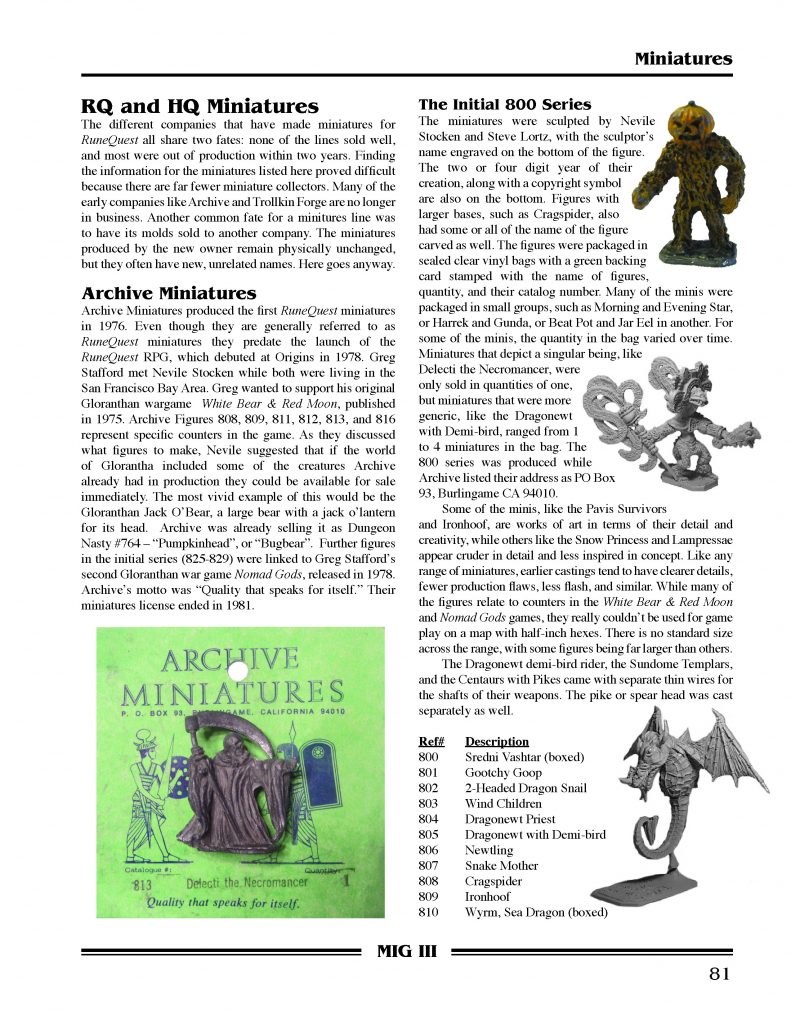
If you can help, or just want to see more previews of MiG3, get in touch with Rick!
Jonathan Tweet Turns Over His Manuscript
It looks like Jonathan Tweet (known for D&D 3rd edition, 13th Age, Over The Age, and much more) has wrapped up his manuscript for “The Dragon’s Eye”, which was announced all the way back in August 2020.
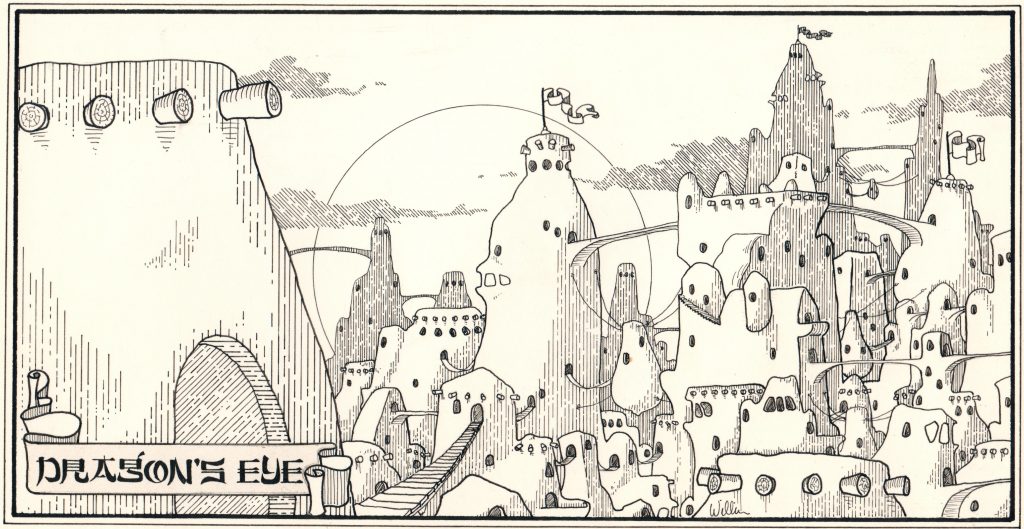
The Dragon’s Eye will supposedly be a collection of landmarks in Dragon Pass with adventure hooks and several possible backstories and directions:
Originally conceived as “Your Glorantha May Vary”, this collection of locations demonstrates the versatility of the setting, putting that phrase to work by showing new and veteran gamemasters alike how to customize and make the world of Glorantha their own.
The Dragon’s Eye gives gamemasters more possibilities than they can possibly use. For each location, the book details multiple ways to interpret it and use it in a campaign. Adventure hooks and engaging nonplayer characters get the adventurers involved in the action. From homely villages to the mind-bending limits of mortal reality, the adventurers encounter everything that Glorantha has to offer, expanding upon locations such as the Dragon’s Eye, the Wasp Nest, Wilmskirk, Old Wind Temple, and many more.
French Edition News
The French Edition of RuneQuest has been sent to the printer, and the “final” PDF files sent to the backers.
You may remember that this edition contains a few extras: two original scenarios (one in the rulebook and one in the Bestiary), some additional reference booklets and maps, some manufacturing details to show that we French people are fancy (cover embossing, dual bookmark ribbons), and, more importantly, a whole new adventure book called “Children of the Flame” containing a campaign centered on the Dundealos tribe. The slipcase will have an original illustration by Joann Sfar on the backside:
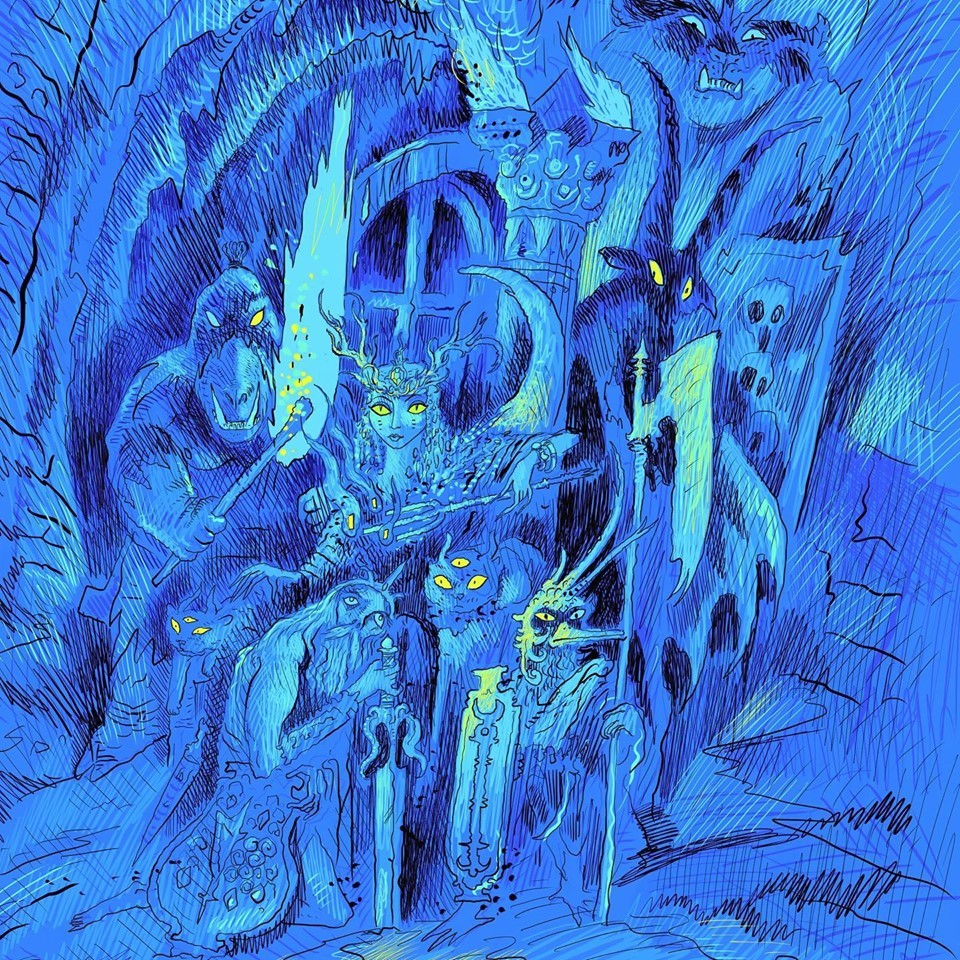
Jonstown Compendium

The Jonstown Compendium is Chaosium’s community content program for all Gloranthan games, hosted on DriveThruRPG. Disclaimer: all the relevant links are affiliate links that hopefully will let us cover some of the hosting and maintenance costs for the website and podcast! Thanks for using them!
Gifts of Prax Art
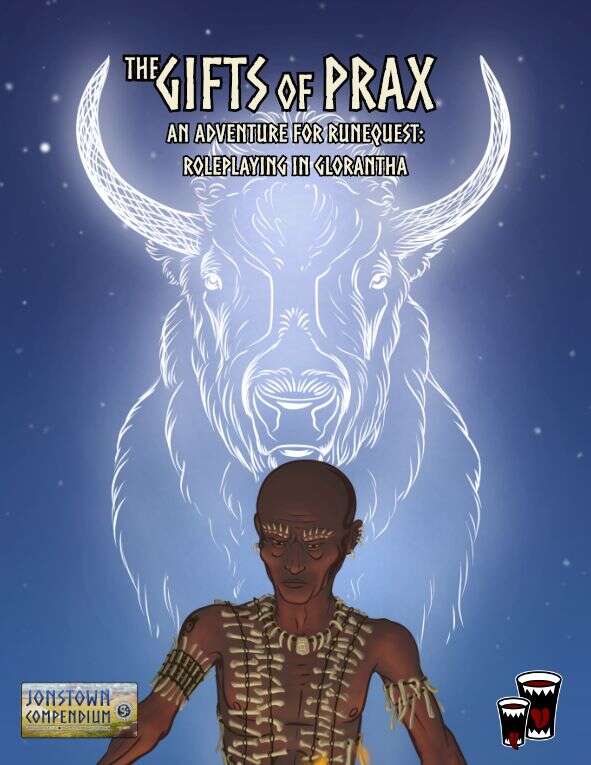
Not quite Jonstown Compendium, but related to it: Kristi Jones has made the art from Gifts of Prax available on Redbubble.
Community Roundup
The community roundup is our highlight of interesting things being mentioned in the Glorantha-related Facebook groups, sub-Reddits, and other similar online places.
Tribal Organization Chart
Did you know that Eurmal introduced PowerPoint presentations and organization charts into the Orlanthi traditions? That rascal! Anyway, here’s how tribes and clans are setup, according to Jeff’s notes for the Sartar Homeland Boxed Set:
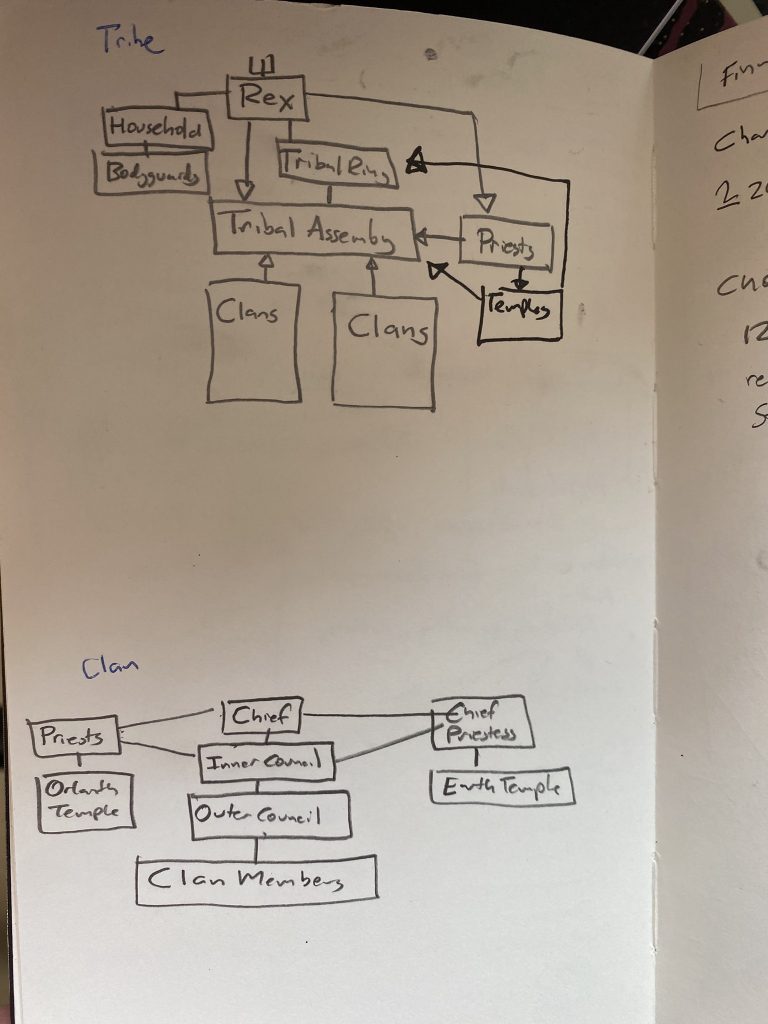
Precisions on Sartarite Communities
Harald “Jajagappa” Smith has been volunteering for the noble and praise-worthy task of archiving many of Jeff Richard’s posts from Facebook to BRP Central. The one on Sartarite clan descriptions has been drawing an interesting comment from Jeff himself.
Apparently, the move away from Nordic terminology in the last decade of Gloranthan publications was partially triggered by the increasing awareness of Viking history in the average pop culture consumer:
[…] I intensely dislike “cottar, carl, godi, thralls” and the rest of the semi-Scandinavian terminology that got used. I find them incredibly drab – and result in people thinking they are playing yet another setting based on the Norse (e.g., Skyrim, Valheim, Banner Saga, Vikings, et al).
Greg and I talked about this quite a bit while working on the Guide – in the late 1980s, Norse terminology was largely unknown in the broader American geek population. You might get a few elements of it from Tolkien or some snippets of dialogue from a Walt Simonson Thor comic. And so back then it didn’t connect with something that many people had seen or experienced – so it hinted at something, but wasn’t particularly restrictive. That’s not the case anymore.
So there, you can blame the editorial changes on TV and video games!
Sorcery is Really Cool, People
Trust us, we are the God Learners. But more seriously, Jeff went into a bit more detail on the topic. First, what is sorcery: it’s “a way for mortals to replicate rather than wield the magic of the gods“. Of course, wielding the magic of the gods is what all of you Rune Magic users are doing on a regular basis, but you have to suck it up to these so-called “gods” to get the permission to do it again later. Oh, you suckers.
The God Learners went a step further and explored the God Time, following the paths revealed by Arkat. By exploring the God Time and understanding the myths of the gods, these sorcerers could gain tremendous insight into the functioning of the cosmos and create far greater magic than the First Age sorcerers could even imagine.
The God Learners did truly blasphemous things in order to gain knowledge – and one was to manipulate the challenges and tests used to prove spiritual claims. They might use sorcery to create effects that could not be created through known Rune magic and then use that to prove their claims and force changes on cults. For although sorcery is not directly as powerful or immediate as Rune magic, with preparation it can be far more flexible, and sorcerers can craft spells that duplicate the effects of Rune magic. Think through the implications of that and be appalled.
And this is why the God Learners are hated. Not the Monomyth, which has been embraced by thinkers everywhere. Not the Middle Sea Empire, gone for seven centuries. Not even the Goddess Switch or the Machine City. No, it is the corrosive impact of their approach on spiritual experimentation. In the Third Age people feared heroquesting because they feared what the God Learners did and what happened to them.
Now, hey, some God Learners did some, err, questionable things, sure. We didn’t have good QA procedures, and the ethical board was underfunded. But #NotAllGodLearners, right? We collectively did screw up a few things, we got ahead of ourselves… but, well, “hated” is a strong word, I think we just have an image problem. But yes the Monomyth is cool: before us it was a giant mess of regional names and partial cult worships. You people wouldn’t have such strong Rune Magic if it wasn’t for us showing you the bigger picture!
Sartar Homeland Boxed Set Art Previews
Art previews keep dripping for several upcoming products (thank you Chaosium!). The first one, from artist Anna Orlova and art director Jaye Kovach, is a wonderful showcase of the Sartarites’ diversity of appearance and style:
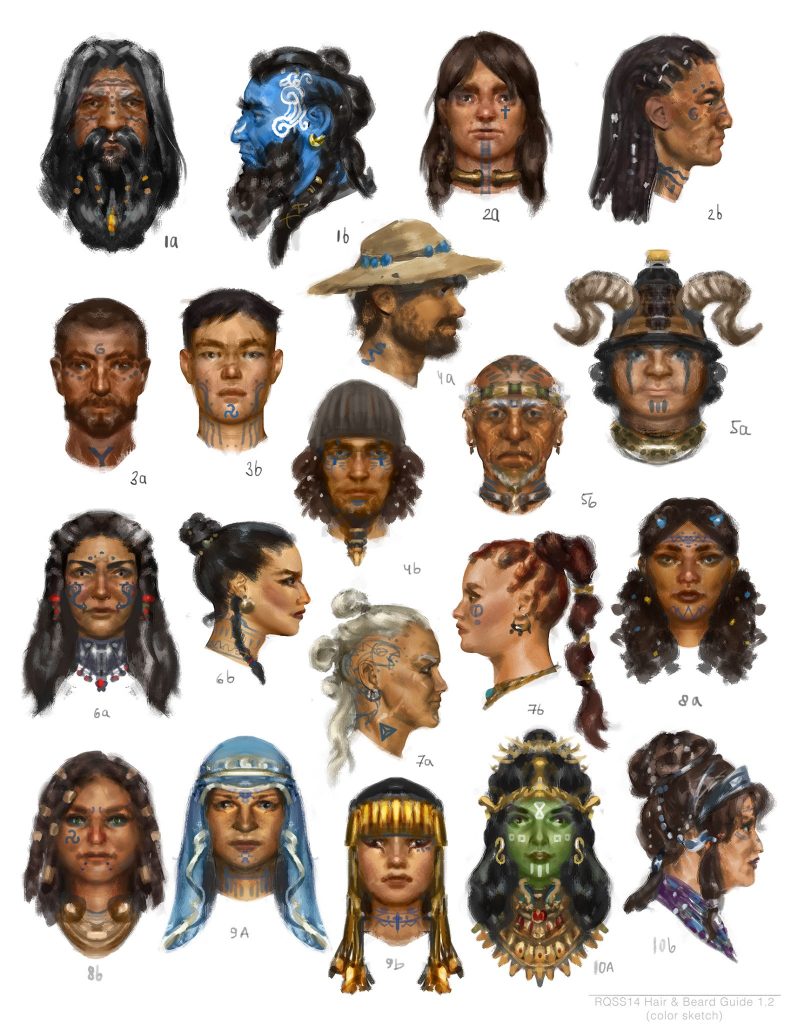
This illustration will supposedly go in a chapter that deals with fashion, hairstyles, and tattoos among the Sartarites.
Next is a work in progress for Leika Blackspear, still by Anna Orlova.
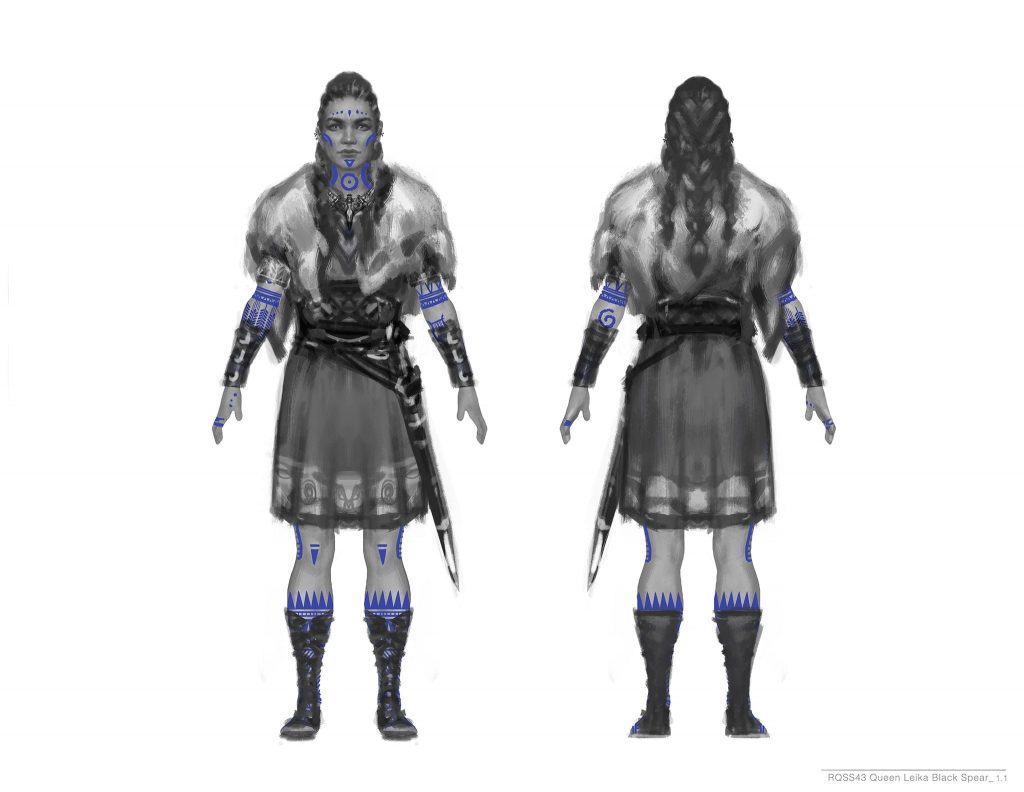
You can find all the information you need about Leika in the excellent RuneQuest Gamemaster Pack (you probably already have that if you’re reading this!) but Jeff shared a few notes about her. First, he highlights how so many of the high-profile figures in the Colymar saga are related:
Kallai is the second cousin to Leika, who is the cousin of Londra of Londros and the Temple of the Wooden Sword. Meanwhile Beneva Chan is the niece of Estavor and Dangment – the two brothers who led the tribe from 1582 to 1598. In turn, Korlmhy “Blackmor” is the son of Kallai and Beneva Chan – and brother of Erenava Chan, the current High Priestess of the Clearwine Earth Temple.
And our RQG preens fit into this soap opera, as Yanioth and Vasana are cousins of both Korlmhy and Erenava Chan, and Harmast is a second cousin to almost all of these folk.
Sartarite clans are small enough that most people know most other people, and family connections can play a big role. Jeff mentions HBO’s “Rome” as a good inspiration for this kind of power dynamics, and then goes on to lay another level of fun:
One of the interesting elements for Leika (and Kallyr) is that although we call her in English by the feminine “queen”, she is a tribal Rex – a king – and the local manifestation of Orlanth Rex. And that means that Leika (and Kallyr) has a wife, at least for ceremonial purposes.
There are stories that suggest that Kallyr’s wife was Ernaldesta the Vigorous (although she had other husbands). And if I recall Ereneva Chan is Leika’s wife. Which sets up two parallel pairs of female king-female Earth Priestess partnerships in Sartar. And interestingly both sides of that partnership are rivals, as Ereneva Chan intensely dislikes Kallyr, and blames Starbrow for the death of her father, exile of her mother, and even her brother’s descent into madness and treason.
Whether these marriages are romantic love-matches or purely ceremonial ritual matters is up to your campaign. In my campaign Kallyr and Ernaldesta are very close, while Leika and Erenava are a completely business-like relationship.
I find this kind of stuff quite interesting. On one hand, Glorantha is trying to emulate Earth’s antiquity and its archetypal gender roles. We can see this through the roles of Ernalda, Orlanth, and Yelm, for instance, and the type of gameplay they enable for characters joining their cults. On the other hand, Glorantha is also trying to bring modern sensibilities to, at least, its central playground of Sartar. Arguably, several of the elements that sound modern to us were already present in real Mesopotamian societies (I only have a superficial historical understanding of this so I won’t elaborate too much), but it’s certainly a fine line to walk for Chaosium. I’d love to learn more about how the RuneQuest creative team approaches this and maybe consults with various people. We know a little bit from Claudia Loroff’s seminar on Goddesses of the Earth, Ellie and Scott Akers’ campaign notes, and some of the 2018 Women in Tabletop Gaming interviews. Maybe that’s something to pursue in podcast interviews… mmh.
Finally, here’s a fun glimpse behind the scenes to explain Leika’s full name (“Leika Beti Ballista”):
The original player character was actually called Betty Ballista. Which we can all agree is not a Gloranthan name. Greg renamed her Leika to be included in his history of Dragon Pass and his Epic Game (which ultimately got incorporated into King of Sartar). But since Ballista isn’t something you can carry around in RQG AND that her possession of the Black Spear would have been her defining feature in 1615-1625, Greg started calling her Leika Blackspear. Which is what we now use.
Cults Book Art Preview
As I said previous, art keeps dripping! This following piece by Loic Muzy is a “typical Lunar depiction of Arkat despoiling Dorasta”.
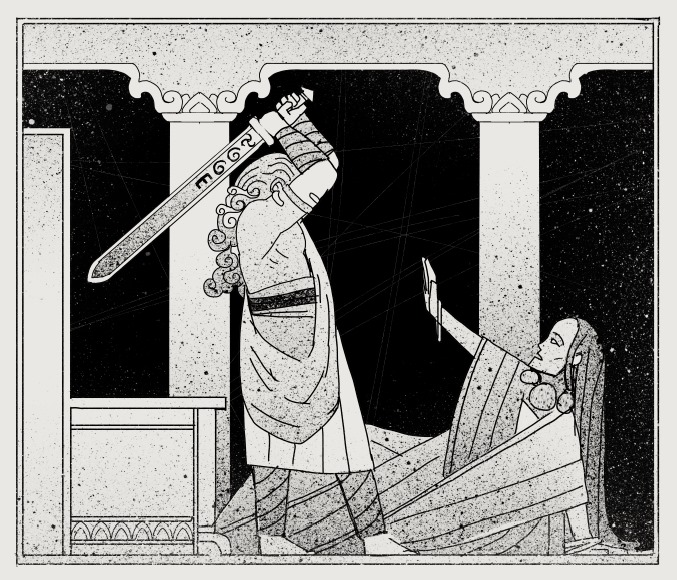
Get Your Arkati Illumination
While on the topic of Arkat, Jeff mentioned that Arkat partipicated in part of Harmast’s Lightbringers’ Quest but “refused the Light”, diving instead into the Darkness, where many mysteries and possibilities waited for him. Arkat went repeatedly into the God Time like this and encountered his Hero Plane self. How cool is that?!
Arkat met himself on the Hero Plane, though confusion clouds the story. Some say he did not recognize his future self until it was too late. Others say he refused to make a killing blow, and thereby took his unhealable wound, while yet others claim he did make the killing blow, and thereby received his wound. Regardless, this event is named Arkat’s Fall. The wound plagued Arkat to his final day, though troll healers effected temporary relief years later.
The reason Arkat is so important even for people born in the 1600s is made clear, too:
Of course it is interesting that Argrath IS an incarnation – a reincarnation – of Arkat. That’s more than just a mere setting background thread, but a creative truth about the origin of both characters in writing.
And:
Argat v Gbaji is hardwired into Time and maybe even behind the Gods War. It is one of the oldest myths of Glorantha. It is older that Orlanth, the Lightbringers, or the Red Goddess. It is up there with Eurmal finding Death as part of the ur-archetypes of Glorantha. And the first word is not misspelled.
Now, OK, we God Learners messed up a bit with Arkat. After Arkat retired, he had a nice cult with a strictly regulated school of exploratory heroquesting. We destroyed all that in the mid 700s and took all their secrets, minus the “strictly regulated”. Like I said earlier, we our QA department was underfunded, and that came back to bite us in the ass pretty hard. But after that, several groups claimed to be the successors of the Arkat Cult, each “with their own secrets and claims of direct lineage”.
So each of these “Arkat cults” can be as wrong or as right as you the gamemaster want them to be in your campaign. They can be charlatans or keepers of mysteries – or both. They can be a little right and a lot wrong – or even something completely other “disguised” as an Arkat cult.
Except there is one Arkat cult that might – just might – have a direct lineage to the God. That of Arkat Kingtroll in Halikiv, founded by the Wizard Children. Except they are no human, but monstrous dark trolls that live forever in Darkness. And they do not teach their secrets to non-trolls.
Huh. I hear Halikiv is nice this time of year. Maybe we should go camping there.
We Have to Talk About Elmal Again
This is the debate that never seems to die among Gloranthaphiles for some reason? After a question about Elmal vs Yelmalio vs Lightfore was posted on Facebook, Jeff gave a thorough answer on the topic. There have been several such “definitive” answers on the topic so far that I’ve seen, but I guess one more isn’t going to hurt? Let’s go over it.
Elmal, as a Sun god with fire magic, “is pretty much a creation of the King of Dragon Pass computer game“. While this game is often people’s first contact with Glorantha, and therefore colours their perception of the setting, Jeff reminds us that it is not only set centuries before the usual early 1600s when most tabletop gaming takes place, it is also an alternate reality in which Sartar never came, the Lunar Empire never became a big threat, and Bagnot didn’t dominate Dragon Pass the way it does in the “canonical” timeline.
Furthermore, I’m going to quote the entire summarized history of solar worship in Dragon Pass, because this way I’m not going to introduce any misunderstandings:
At the Dawn, there were lots of little solar cults that worshiped the Light that held out in the Darkness. At the time they had names like Antirius, Elmal, Kargzant, etc. People worshiped these Lightfore cults because the Solar Disk was not worshiped by humans until the Dara Happan Emperor founded the Yelm cult. During the later First and Second Age, most of these little sun cults were recognised as Little Yelm, aka Yelmalio.
There were a few hold-outs. One was the Little Yelm cult of the Hendriki in Heortland, which managed to hold out thanks to that tribe’s remote position on the Heortland plateau. The cult came to Dragon Pass with the resettlement. That’s what we call Elmal.
When the Little Sun came into contact with the big Yelm cult they were shocked. Yelm had fire magic and fire elementals and powerful magic. The Little Sun just had perseverance. Many Little Sun worshipers fought against their Orlanthi leaders and civil strife between the Elmali and the Orlanthi nearly destroyed the Kingdom of Sartar in a time of growing crisis. This is presented in King of Sartar.
Monrogh heroquested to determine who the Little Sun is. He discovered that the Little Sun is different from Yelm and just as worthy of worship – he is Yelmalio, who preserved through the Greater Darkness and was the Light that was never extinguished. Yelmalio is his own master, able to ally with Orlanth when necessary to fight Chaos and Darkness, but able to fight Orlanth when the Storm God brings forth Darkness. This was strongly supported by the Orlanthi cult leaders, especially Prince Tarkalor. Monrogh was able to go to Little Sun ceremonies and Yelmalio manifested. This is the story presented in King of Sartar.
Of course, the HeroWars books (and in particular the “Storm Tribe” supplement) probably played a big role in Elmal, ahem, persevering in the minds of players. After all, he’s listed or illustrated multiple times on the same level as Chalana Arroy, Storm Bull, Yinkin, and so on. He’s featured on clan questionnaires as a possible clan deity, supposedly “receives communal worship from all Heortlings on [his high holy days]“, with “many holy places in Heortling lands, especially in Dragon Pass“. It was only in the later HeroQuest books (such as “Sartar: Kingdom of Heroes”) that Monrogh Lantern’s heroquesting was given more weight, that it was specified that the cult was “in decline” in Sartar, and that many worshippers had long converted to Yelmalio or even moved the the Sun Dome.
How The Lunar Empire Conquered Dara Happa
I’m still wholly ignorant about many aspects of Glorantha, and one of my blind spots is how the hell did the Sun-worshipping people of Dara Happa got mixed up with the new-wave Moon-worshipping people of the Lunar Empire. Well, I guess “with Lunar sorcery and lots of violence” is the summary? Over at BRP Central, Jeff shares some notes on how history goes.
As far as I can tell, the Yelm aristocracy sure suspected the Red Emperor of sorcery when he proved to be Yelm’s incarnation through the Test Tests of the Emperor. They were very wary of all the strange tricks they used to conquer the Carmanians, so even though it seemed at the time that Dara Happans and Lunars were buddies, like two kingdoms united in the noble marriage, they feared that their new Emperor was lot more Lunar than Solar… this created tensions and, eventually, war. These rebellions were squashed within a decade, but not entirely eliminated. When Sheng Seleris attacked a century later, some Dara Happans joined him, becoming “Dara Happa On Horse” as Jeff puts it, but these too were exterminated.
The Dara Happans have had three centuries of co-existence with the Lunars since their original conquest:
The Red Emperors have firmly established their connection and control over the Pelorian Yelm cult (especially since the alternative is Sheng Seleris).
So again, it is just as easy to say that in the centuries after its conquest in 1285, Dara Happa managed to capture the Lunar Empire. Certainly many in the White Moon Movement would say just that, with the Red Goddess fighting wars in distant Dragon Pass and sacrificing thousands to fight the Storm God rather than bring forth the White Moon Era.
It’s all a matter of perspective and historical context:
As an aside, there are plenty of late Third Age commentators that the Celestial Deities have been dimmed or otherwise submitted to the Crimson Light of the Red Moon. Although I present the Sky Deities and the Lunar Deities as different pantheons, I very easily could have presented them as ONE celestial pantheon, now headed by the Red Goddess. Like how Marduk supplanted Enlil and became the head of the pantheon.
So instead of imagining Dara Happans like the Tarshites, where a minority is still desperately rebelling against the Lunar rule, it might actually be the opposite. The Dara Happans retained their power during this transition, with most Lunar noble families being of Solar origins. They have long accepted that the Red Emperor is also the Dara Happan Emperor… or vice-versa. So:
I think it is more likely that there are Lunar plots to win independence from Dara Happan dominance.
The old Yelmite families are subservient to the institution of Moonson (even as they no doubt compete to be the next Mask) just as Yelm is subservient to the Red Goddess. If there are anti-Moonson movements (and of course there are), they likely come out of some of the Nysalorean schools (who just can’t help it) or from ambitious figures within the Lunar leadership (who hope to be the next member of the dynasty).
Sure there might be some unrepentant Lhankor Mhy scribe who scribbles venom against Irrippi Ontor and the like and pines for the good old days when Yelm’s light was not dimmed by the Crimson Moon, but such a person is about as marginal as you get and more likely to head south or east to support some barbarian warlord fighting against the Empire.
This is all good stuff for playing spy games in the Lunar Provinces!
History of the Sun County
You should now know the drill: MOB is continuing his now epic saga of the Sun County. A master class in weaving published scenarios and NPCs together from various sources along with plenty of original content, handling various important figures with each their own complex agenda, and sprinkling heavy doses of mythic heroquesting and down-to-earth humour.
Arkham Map Easter Egg
Given my undying love for Call of Cthulhu, I’m kicking myself that I didn’t realize this earlier, but the classic Arkham map features a RuneQuest easter egg… can you spot it?

Note that the Call of Cthulhu Classic Kickstarter (which celebrates 40 years of eldritch horror gaming!) is running for another week.
Elsewhere on Arachne Solara’s Web
Not everything is about Glorantha, although most things can be! Here are loosely relevant things that we found on the interwebs.
Orkenspalter TV’s RuneQuest Actual Play
I don’t understand German so I have no idea what’s going on in there (except that they’re creating RuneQuest characters and playing some adventure)… so go and ask Joerg for his opinion. But I do want to salute Mhaire’ dedication with her amazing cosplay:
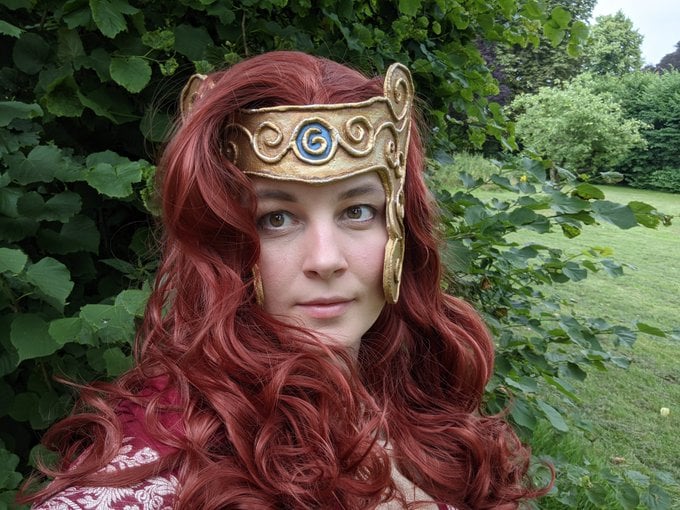
If you do understand German, you can follow their game on Twitch or YouTube.
Pookie’s Griselda Readings
Unstoppable reviewer and editor Pookie has a long-running YouTube series where he reads the Gloranthan short stories of Griselda, by Oliver Dickinson. He’s up to episode 17 now!
His YouTube channel has many “quick first impressions” of RPG books such as, say, the RuneQuest Classics:
If you want more in-depth reviews, Pookie’s “Reviews From R’lyeh” has an article for what looks like every RPG publication in existence ever. Here’s a handy link to all the Glorantha-related reviews.
Shannon Appelcline Indexes Ye Booke Of Tentacles

One of the hobby’s main historians and archivists, Shannon Appelcline (who also happens to be a giant Gloranthaphile) has spent years building indexes of a variety of fanzines. He just finished a fairly detailed index for the six issues run of Ye Booke Of Tentacles, a fund-raiser fanzine produced for the German convention that later was succeeded by The Kraken (same team of organizers at a different location) and the Eternal Convention (same location and “date”, new team of organizers).
The First Appendix N
The excellent GROGNARDIA blog looks at RuneQuest’s bibliography appendix, and compares it to Gygax’s.
Both bibliographies are the fourteenth appendix in their respective volumes, which is quite a coincidence – and a coincidence I am sure it is (for logistical reasons, if nothing else). Even if it weren’t, the writers of RQ make it quite clear that, despite superficial similarities, their Appendix N is actually very different in both its content and intention than Gygax’s own list. This becomes even clearer as you take a closer look at it.
An Infestation of Carcharids
The D-Infinity Network’s “RuneQuest Thursdays” continues with Carcharids, beastmen who descend from the Shark God Carcharias. I don’t know if the author read too much DC Comics speedster adventures lately, or binge-watched all the shark movies on Amazon Prime, but hey, we’re not going to complain. Big shark-dudes roaming the banks of the River of Cradles sounds like a great way to surprise jaded Praxian adventurers.
Let’s Talk About RuneQuest Classic
Nicholas Bielik gives us a lecture on the classic RuneQuest 2nd edition, and why it was unique and interesting when it came out:
Thank you for reading
That’s it for this week! Please contact us with any feedback, question, or news item we’ve missed!
Edits: a previous version of this article attributed AD&D, and not D&D, to Jonathan Tweet. The online name of Harald Smith was also incorrectly spelled “jajapagga” instead of “jajagappa”. Now we figured out why our heroquests were failing miserably.

